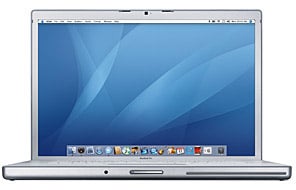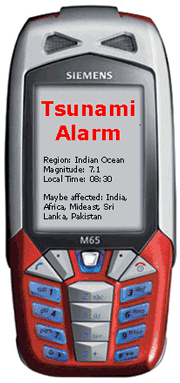Latest Gear Live Videos
Bleeding Edge TV 158: AMD Press Conference: 690 Series, R600, 1 Teraflop

Posted by Andru Edwards Categories: Full Episodes, Gizmatic, Corporate News, Design, Features, PC / Laptop, Video Games, Videocasts, Wireless / WiFi,
We were on hand when AMD announced the 690 chipset, and also showed off the new R600 graphics technology, showing how it is able to hit the 1 teraflop mark. The video features the entire press conference presentation, including an update on the status of ATI R600, why it was delayed, and when it will launch. If you want the text version, we took minutes of the conference, which you can read below (also, be sure to check out the AMD press conference Q&A session video):
We are sitting here live at AMD’s press conference this morning, where there should be a few interesting announcements being made. Let’s jump right in, as we are live-blogging it.
10:11: AMD has been too quiet, and they know that. They will no longer allow their competitor to have the talking floor. They will no longer be pushed around by a competitor who doesn’t respect the rules of fair competition. AMD is proud that they are approaching the real issues that the industry is facing. High definition is becoming a reality more and more, and AMD plans to continue to lead that in the PC market. They will be focusing on energy-efficient processing from handhelds to datacenters, the ultimate visual experience, and empowering the world population with affordable Internet access platforms.
10:14: The OLPC initiative started four years ago, but we are now near-launch. There is an almost-final unit here at the conference. The merger of AMD and ATI was a necessary step to take AMD excellence to the next level. AMD says their hope is that their competitors go to the drawing board and beat their chips to spark competition, because AMD is confident that, in the end, their products will beat whatever their competitors respond with. Competition is a good thing.
10:18: Barcelona is more of a killer product than Opteron was when it was launched. Today we are going to get a look at Barcelona. Today AMD will be showing us a lot more than they have in the past. “The new AMD is coming together.”
10:21: Dave Orton hits the stage. This is more than a launch, it’s a campaign for 2007. AMD 690 is the foundation for a compelling PC. The combo here is WIndows Vista, ATI for the visual experience, AMD 690 chipset for stability, AMD Athlon for wide availability and choice. The end result here is great system value. At a platform level, the 690 chipset is the basis for innovation.
10:24: AMD 690 is architected to provide a premium Windows Vista experience. Right now, half the systems tested for Vista compatibility don’t even hit the good level. 75% don’t hit better, and 90% don’t hit best. The goal of the 690 chipset is to put out affordable systems that will be stable and capable enough to provide that Vista experience that Microsoft wants consumers to have, including full high definition capabilities. This includes fully supported Vista drivers.
10:27: The AMD platform strategy happens in phases. In 2007 we are seeing unprecedented support for AMD 690 chipset and boosted performance and power characteristics. In 2008 we will see significant performance enhancement and power-saving improvements, as well as optimized gaming, multimedia, and productivity platforms. Finally, in 2009, that is where we see the real end-goal of the fusion between ATI and AMD. On one chip, CPU, GPU, etc.
10:30: AMD shows off a slide that talks about gaming in Vista and how the AMD 690G Chipset compares with the Intel G965. AMD blows it away in 3DMark05, Aquamark, Half-Life 2, and Far Cry v1.4. Even further, they show a large list of 12 popular games that have vast problems, or that just flat out don’t work, on the Intel G965.
10:33: They are about to do a demo that takes an hour to do on the fastest PC in the world. AMD just did it in about 20 seconds, and that just resulted in 1019 gigaflops, or 1 teraflop. Very impressive. This tech would speed up Folding@Home by about 40 times.
10:39: Addressing Torrenza. AMD is looking to Accelerated Computing. The goal again is to blend CPUs and co-processors together. Eventually, at the silicon level, you will have CPU, GPU, accelerators, etc. With multiple cores, you can integrate everything into a heterogeneous core.
10:41: Mario Rivas takes the stage to talk about the outlook on the CPUs. He starts by talking about the evolution of AMD CPUs, from 1999 to this year when Barcelona launches. Up next is a Quad-Core AMD Opteron. This is a native quad-core with significant CPU core enhancements as well as cache enhancements. Also, dedicated technology for virtual environments.
10:45: It’s not good enough to have four cores in the same architecture. Those cores need to be able to communicate, and that will give AMD a 42% performance gain over Intel.
10:47: Turion CPU is up next, followed by Griffin. We now move to innovation on the desktop. The Agena quad core chip will hit the desktop, which is based on Barcelona. Will eventually allow for 8 cores.
Advertisement
2006 Holiday Gift Guide: Apple MacBook Pro

Posted by Andru Edwards Categories: Apple, Features, PC / Laptop, Men, Techies,
 In our opinion, it doesn’t get much better than the MacBook Pro when it comes to a portable computer. Why? Well, aside from the Intel Core 2 Duo processors that they house, they are lightweight and have batteries that last almost three hours under normal use and load. It has a built-in iSight webcam, FireWire 400 and 800 ports, and a backlit keyboard. The kicker here though, is that by using this with the Parallels software, you can run Windows 2000, XP, and Vista side-by-side within OS X. If you prefer a dedicated OS experience, you can use Boot Camp to run Windows on it’s own. That means that by buying a MacBook Pro, you get access to both the OS X and Windows operating systems with extreme ease. The same can’t be said for the PC side of things.
In our opinion, it doesn’t get much better than the MacBook Pro when it comes to a portable computer. Why? Well, aside from the Intel Core 2 Duo processors that they house, they are lightweight and have batteries that last almost three hours under normal use and load. It has a built-in iSight webcam, FireWire 400 and 800 ports, and a backlit keyboard. The kicker here though, is that by using this with the Parallels software, you can run Windows 2000, XP, and Vista side-by-side within OS X. If you prefer a dedicated OS experience, you can use Boot Camp to run Windows on it’s own. That means that by buying a MacBook Pro, you get access to both the OS X and Windows operating systems with extreme ease. The same can’t be said for the PC side of things.
Price: Starts at $1,999 (Compare Prices)
New Tsunami Warning System Analyzes Hard Drives

Posted by Sheila Franklin Categories: Smartphones, Internet, Science,
 Ever since the 2004 tsunami, scientists have been searching for a better method to detect and warn us of upcoming earthquake-generated tidal waves. Austrian Michael Stadler may have devised an answer. Stadler has developed a program that accesses and analyzes data that comes from hard drive vibration sensors. Once the data is analyzed, it can be shared with other computers.
Ever since the 2004 tsunami, scientists have been searching for a better method to detect and warn us of upcoming earthquake-generated tidal waves. Austrian Michael Stadler may have devised an answer. Stadler has developed a program that accesses and analyzes data that comes from hard drive vibration sensors. Once the data is analyzed, it can be shared with other computers.
The program can ignore minor vibrations and differentiate between normal seismic and tsunamic activity. When “the big one” is about to occur, the system sends warnings to the other connected computers. Unfortunately, there is so much interest in the freeware download that his site seems to have crashed (no pun intended). Hang onto the link and try again in a day or two, or visit his suggested site of Dr. Eduard Heindl. Dr. Heindl has also created a warning system that can alert you by cell phone through a GSM network in any country at a price of EUR 9.95 (~$12.60) for a 1 month trial or EUR 29.95 (~$38.00) per year subscription.
Read More  | Michael Stadler Website
| Michael Stadler Website
Advertisement
© Gear Live Inc. {year} – User-posted content, unless source is quoted, is licensed under a Creative Commons Public Domain License. Gear Live graphics, logos, designs, page headers, button icons, videos, articles, blogs, forums, scripts and other service names are the trademarks of Gear Live Inc.










